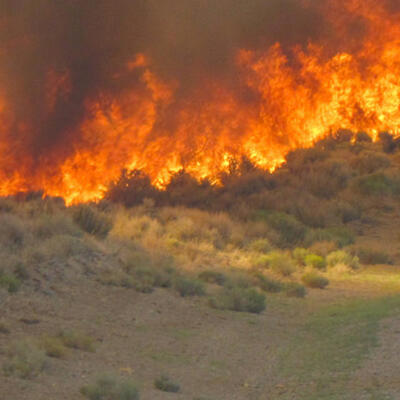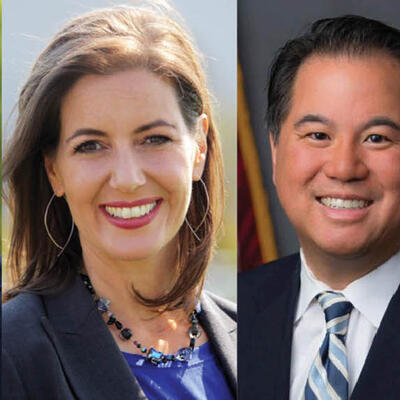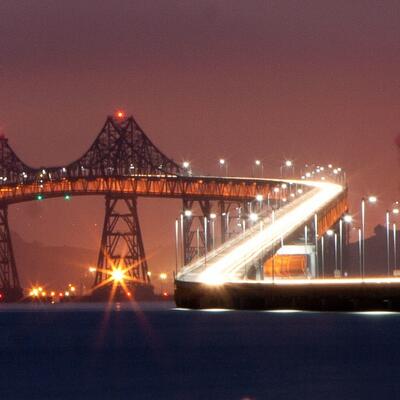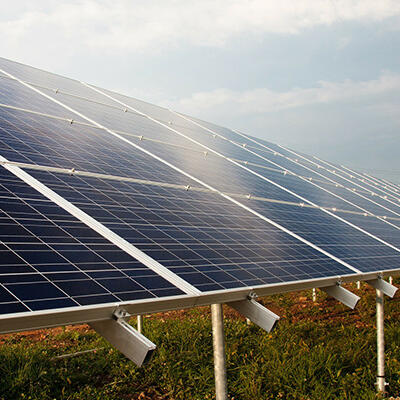
Competition for Power
Guests
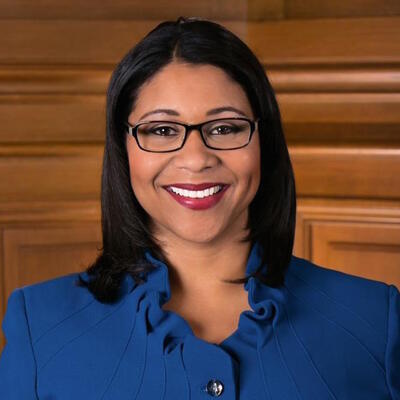
London Breed
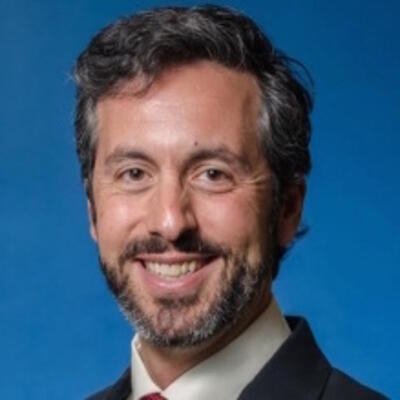
Matthew Freedman
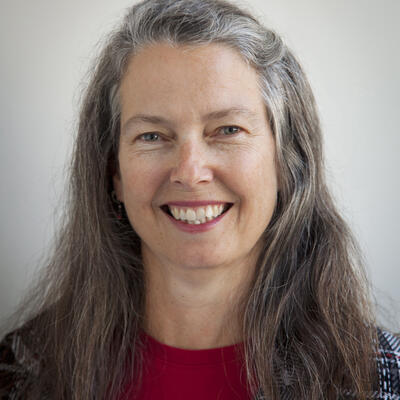
Barbara Hale
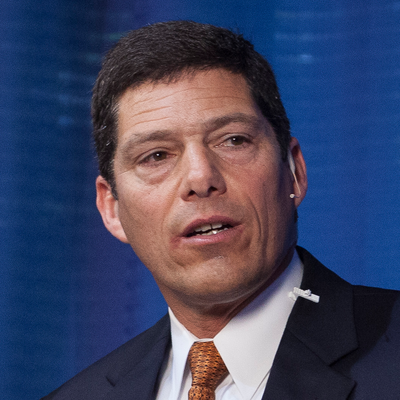
Hunter Stern
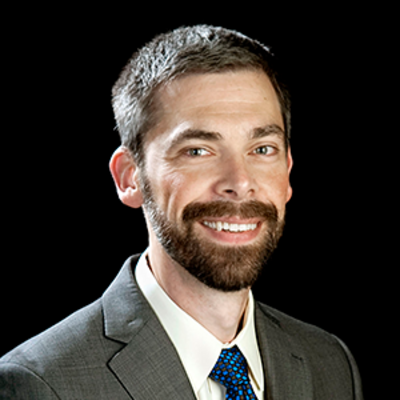
Geof Syphers
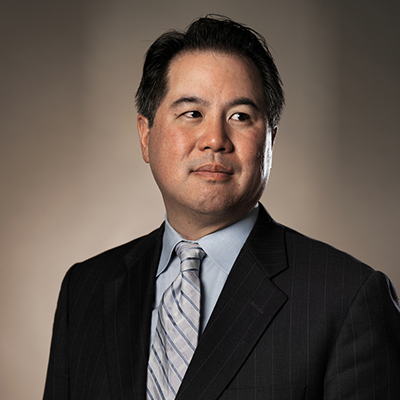
Phil Ting
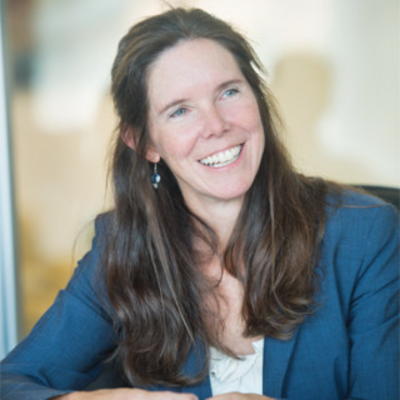
Dawn Weisz
Summary
Consumers in Marin and Sonoma already have freedom of choice when it comes to renewable power. Now San Francisco voters are about to have their say.
Geof Syphers, CEO, Sonoma Clean Power
Matthew Freedman, Staff Attorney, The Utility Reform Network
Phil Ting, California State Assemblymember (D-19)
Barbara Hale, Assistant General Manager, San Francisco Public Utility Commission’s Power Enterprise
Hunter Stern, Business Representative, International Brotherhood of Electrical Workers
Full Transcript
Greg Dalton: A growing number of Californians are opting for clean electricity to run their TVs and toasters. But how much do these people know about where their power really comes from? I’m Greg Dalton and today on Climate One, we’re exploring communities are offering a choice of where to buy power. The first half of the program, we’ll talk with executives from Marin and Sonoma counties where consumers can choose power from a government agency or PG&E. It can also pick power that is different shades of green based on how much comes from wind, solar and other renewable sources. The second half hour we’ll dig into San Francisco’s long running battle to offer consumers an alternative to PG&E. Two initiatives on the San Francisco ballot in November are related to the city’s Clean Power SF program which is slated to start running in 2016. First, we turn to the North Bay where a couple hundred thousand people can buy their power from PG&E or another supplier. Here to talk about what it means for pocket books and California’s climate goals we have three guests. Matthew Freedman is a Staff Attorney at The Utility Reform Network, the consumer advocacy group. Geof Syphers is the CEO of Sonoma Clean Power and Dawn Weisz is CEO of Marin Clean Energy. Please welcome them to Climate One.
[Applause]
Before we begin, I should note that PG&E declined our invitation to join this program citing state rules that prevent California’s big three utilities from talking about start up competitors.
So I’d like to start with Dawn Weisz. Why did Marin embark on this path to make its own energy to run the hot tubs up there?
Dawn Weisz: Well, the reason that we went to all this trouble and it was a lot of trouble was climate change. We had a lot of elected leaders in the cities and towns around Marin County that were very concerned about the impacts on climate change. We conducted a GHG inventory, a greenhouse gas inventory, in the late 90s and start a target for greenhouse gas reduction that was pretty aggressive. And then we set out to determine how we could achieve that goal. About 45% of our greenhouse gas emissions come from stationary sources, buildings, homes and businesses. And we only had one choice of power supply at that time it was less than 12% renewable, the rest of it was fossil or nuclear or large hydro. And we went to our supplier at that time to see if we could have another choice for a greener supply mix and because that wasn’t an option we look to see what other options we might have to change that piece of our contribution to climate change.
And around that time, there was a bill, AB-117 state legislation, enabling community choice. Community choice is a state initiative that allows local governments to become the power purchasers for their communities. Well this sounded like a pretty good idea, we weren’t sure if it would work so we supported the legislation and then we begin studying whether it was feasible or not. Now, all of our studies came back looking very positive and so we pursued this idea for many years before launching in 2010. And it’s been really exciting to see the big impacts that we can make in climate change really at the flip of a switch when customers start getting supply from us that’s twice as renewable as they were getting before.
Greg Dalton: How much have you really saved, what climate impact have you achieved?
Dawn Weisz: We’ve been able to reduce greenhouse gas emissions dramatically and in fact the most recent year that counting is available our greenhouse gas emissions are 17% lower than the incumbent utility and is having a very big impact. It’s also resulting in a lot of new renewables being built around the state of California. Just in the last year, we had a 20 megawatt solar facility come online last December. This year we had a 23 megawatt solar facility come online and a 99 megawatt wind facility come online. Within our service territory we’re building a 10.5 megawatt solar facility at a Brown Field site in Richmond which is part of our service territory. And we are going to see a lot of local jobs that has a 50% minimum threshold for local hire for that project. And we have about nine other local projects within our service territory that are being developed right now.
Greg Dalton: Geof Syphers, you’re sitting up in Sonoma, looked at this and said we’re going to do it too. So why are you doing it and how are you doing it differently in Sonoma?
Geof Syphers: Well we follow it on the heels of Marin success and it was really actually valuable to have their example to get going. It’s always best to be second, a whole lot easier. We started with an interest too in climate but early on we were focused on the percentage of renewable energy in our mix. And I think an average person would think that’s a pretty good metric but in California, hydropower isn’t called renewable, it’s not a legal designation. So we pretty quickly shifted the thinking about carbon content of power and what that did is it, it meant that we didn’t only focus on sources at that point. We started to realize that demand reductions, that’s how much power you are using and when. That matters as much as where your power is coming from because if you want to cut carbon out of the grid, and you want to have a sustainable future, you got to look at the sources of course.
But it’s really not how much renewables we add, it’s how much fossil we turn off. That’s the goal. Adding renewables itself is a tool but it’s not the goal. So when we realized that it broadened how we were thinking about things a lot. And so we have a default service that’s 36% renewable but it’s 80% carbon free. And we also have a voluntary premium product called Evergreen that’s a 100% renewable and a 100% local, so it’s made in Sonoma County, and that is one of the new things we experimented with. So it’s been that evolution of thinking about what really ultimately matters that’s been really valuable for us to get our finger on.
Greg Dalton: Matthew Freedman, is this a good deal for consumers? Your organization’s often focused on consumer advocacy, a good deal particularly for lower income people, are these things a good deal for consumers?
Matthew Freedman: Well, both Marin and Sonoma are offering very economically competitive alternatives to PG&E. So when customers are switching they’re either staying the same or they’re even saving money on their bills. But I think what customers really want to know is does their choice end up being meaningful? Does the decision to switch providers result in a change in the way the power is produced on the grid. Are there actually less carbon emissions, is anything different because you made this choice. I think there, the jury is out. There’s a lot of talk about reducing carbon emissions or percentage of the portfolio coming from renewable resources but so far, the vast majority of the transactions that have been done on behalf of customers of community choice aggregators have been short term transactions from existing facilities that haven’t actually changed any of the output on the system. So, the long term question for community choice aggregators is, does the grid look different because they’re there or is this just an exercise in folks taking credit for stuff that’s already happening? And that’s the open question.
Greg Dalton: Dawn Weisz, you claimed the 17% reduction; are you making new things happen or are you just taking credit for things that would happen anyways?
Dawn Weisz: We are absolutely making new things happen. We have a list available on our website and I’ve got some copies here of 26 new renewable projects that we’re buying power from. These are all projects that didn’t exist before we were there to buy them. And only three of them are short term so the remainder of those are long term, meaning ten year or more. Most of our contracts are in the 20 and 25 year time frame.
Greg Dalton: Matthew Freedman.
Matthew Freedman: Well, I hate to disagree with Dawn. Certainly the number of projects she cited are the number of projects, but if you look at Marin’s report from 2014 less than 10% of their total procurement came from long term contracts. And over 50% of the procurement in the entire Marin portfolio for renewable resources is coming in the form of short term transactions for tradable certificates from facilities primarily outside of California. So yes, Marin has proved to be a leader in executing new contracts, long term contracts for new resources but it’s still a tiny slice of the portfolio. And so in the long run, I know that Marin and Sonoma are both committed to building a portfolio of new facilities that wouldn’t have otherwise existed under long term contracts. But so far the percentage of those facilities supplying their customers is quite small.
Greg Dalton: So are you saying Marin is greenwashing?
Matthew Freedman: I’m saying that the percent of power coming from renewable resources or statements like the amount of carbon emissions associated with the portfolio, these are marketing claims that are legal. So no one’s breaking any rules. But they’re not meaningful enough for customers to understand what impact their choices having. You have to look a lot deeper, you have to look to see if for example Marin and Sonoma hadn’t bought tradable credits from a wind farm in Idaho. Would that wind farm still have operated? Did it change the profile of that facility? Was less fossil power actually produced? And in most cases the answer is no. Pretty much the grid is the same as it was before.
A meaningful test for whether or not things are changing is if new investments are made and new facilities are constructed. That’s really the meaningful test. And on that front, I know that both of the CAA’s here on the stage, that’s part of their long term plan but it’s not a big feature of their short term portfolio. And that’s why I would say that the jury is out and I hope they succeed, that’s what we all want.
Greg Dalton: Geof Syphers, your system in Sonoma relies less on these tradable instruments out of state power than Marin, is that true and is that part of the reason that they’re kind of complex and people don’t understand them?
Geof Syphers: It is. So we decided to launch with 33% renewable excluding any renewable certificates. And what that means is we’ve already met the 2020 goal but the investor owned utilities like PG&E are trying to achieve right out of the gate. So that was at our initial launch. And so that to me, that argument is kind of a non-sequitur because anything that we’ve ever done with certificates we haven’t taken greenhouse gas credit for and I believe we’re the only ones who’ve done that including the utilities. And we also have chosen to make sure that it’s entirely in any voluntary portion of our portfolio. We don’t buy them going forward at all either because of the controversy, not because they’re not green but because they probably don’t do a lot to help build new facilities as you point out. But I don’t think that means that they don’t have greenhouse gas value. That greenhouse gas value from that facility that it’s a wind farm in Idaho you say. If we don’t take credit for it as the buyer, somebody should, right? And so if we don’t and we’re paying for that green attribute, somebody should. So who should? I think the key though is we’re already successful, we’re not using any voluntary renewable energy credits. And we’re not taking any greenhouse gas value for it. So I’m unclear what the problem is because we’re far beyond any of the utilities.
Greg Dalton: Dawn Weisz.
Dawn Weisz: Yeah, I’d just like to add. We’re unclear what the problem is either. I think that the data that Mr. Freedman just quoted doesn’t sound right to me and it might - you know, looking at data maybe is complex and I’m happy that help you look through that. But we currently have 186 megawatts of renewable energy in our portfolio. Our average load is 240 megawatts. So to me, that, you know, on a sunny and windy day any way, we’re producing over 70% of our supply from renewables. Granted a couple of these projects are new, and they wouldn’t be showing up in our 2014 report, but I think the numbers you stated were really understated quite a bit.
As the first community choice program in the state, we’ve been subjected to a lot of scrutiny and a lot of misinformation. Both by the income utility and their partner agencies and that’s unfortunate because it does a disservice to the public and makes it difficult for the public to understand the positive impacts that we’re able to make when we get new renewables on to the grid. The out of state RECS that were referenced earlier are as just said --
Greg Dalton: Renewable energy credits.
Dawn Weisz: Renewable energy credits. They are what’s used when you buy an out of state renewable product. We used more of those at the beginning when we were in the process of building new local projects because you can’t start a program and have all your resources built from day one. We’ve been operating for five years now and we’ve transitioned to this year only having 15% of our energy supplied from these tradable RECS from out of state. Next year we’ll be at 3%, so again, seems like a non-issue to me.
Greg Dalton: Some people think it’s an issue Dawn Weisz that Shell Oil is involved in supplying electricity to Marin. What do people in Marin think about that?
Dawn Weisz: Yeah well, when we were initially launching our program, we issued an RFP, we looked for anyone that would sell power to us, we had specific requirement of minimum 25% renewable energy. And we only got three bids. Two of them were offering adjustable rate mortgage style price which wasn’t fixed and our elected officials weren’t comfortable with that. Shell Energy was able to offer us a 25% renewable product and in order to get our program off the ground, that was the path forward; that was the only path forward. Shell has been a good transactional partner but we realized that some of the things that their parent company is doing are concerning, particularly for the climate. Our initial contract with them was intended to be a bridge contract and that’s in fact what it is.
Since entering into a contract with them we’ve added more than 30 different power supply contracts to our portfolio. So we have multiple suppliers. Calpine is one example I know you’re getting power from them locally. East Bay MUD is our most recent counter party, they’re local. And we’re buying power from a very diverse number of power suppliers. I think that sometimes individuals that are looking to mischaracterize our procurement will look at the filings that we make to the California Energy Commission and the California Public Utilities Commission. And misunderstand that because Shell Energy is handling some of our scheduling that we’re actually buying that quantity of power from them. But when power is scheduled on to the grid, that’s very different than actually being sourced from that party. So I’m happy to sit down with folks and help explain that. But the majority of our power now is coming from many other suppliers.
Greg Dalton: Dawn Weisz is CEO of Marin Clean Energy. We’re talking about clean, local power at Climate One today. Other guests are Geof Syphers, from Sonoma Clean Power and Matthew Freedman from the Utility Reform Network. I’m Greg Dalton.
I’d like to go to our lightning round this first half of the program. Yes or no questions. Matthew Freedman, were you surprised that Mike Florio a former consumer advocate was turned, who is now at the Public Utilities Commission for the state became a turncoat, inappropriately colluded with the utility he supposedly regulates?
Matthew Freedman: Yes.
[Laughter]
Greg Dalton: Dawn Weisz, if you could design Marin Clean Power today from scratch, would you rely less on out of state power and complex financial instruments?
Dawn Weisz: Well, if I were starting from scratch today I would be able to buy renewable power at about half the price of where we started in 2010. So yes, I would do it very differently; we would have the ability to buy more in-state products at an affordable price. But there would still be a bit of a time lag for the development process. Takes about three years to develop.
Greg Dalton: So that’s, that’s a yes.
[Laughter]
Dawn Weisz: Sorry.
Greg Dalton: Matthew Freedman, energy costs will increase as the state and the country confront climate disruption and people pay the true cost of their connected lines?
Matthew Freedman: Not in California, not if we’re committed to a path that increases reliance on renewable resources that don’t depend on fossil fuel prices.
Greg Dalton: Geof Syphers, PG&E spent nearly $60 million on a statewide ballot measure to amend the state constitution and stifle competition, yes or no?
Geof Syphers: To stifle competition? Yes.
Greg Dalton: And they’re doing just fine. It failed, it failed but they’re doing just fine.
Geof Syphers: They’re doing just fine? That didn’t sound like a question.
Greg Dalton: Are they doing just fine, yes. Fair enough. Okay, how’d they do on the lightning round? Let’s thank them for that.
[Applause]
One other aspect of these programs is opt in, opt out. When people get email marketing, they want opt in and in some areas that’s, Geof Syphers, that’s the tradition that people don’t like to have to opt out. But in these community power programs, people are automatically enrolled and they have to opt out, is that the right way to do it?
Geof Syphers: Yes, it absolutely is. If we don’t do it that way, if we don’t have the default service with the local provider then the local provider cannot begin. Default service is how we finance a community choice program. So if you, if you don't own default service and the local folks don't control that, you can’t go to a bank and borrow money and you can't buy energy.
Greg Dalton: The advocates for these things marketers et cetera, they always want opt in. Matthew Freedman, you got a problem with opt in, opt out?
Matthew Freedman: No, I agree with Geof actually. If you don't have the current system where customers have to affirmatively opt out, local power is simply nonviable. Just the transaction costs of identifying, marketing to customers, signing them up, they’re prohibitive. It can cost several hundred dollars for every small customer that you bring onto your service.
And you can't make that up in any reasonable period of time. And that's why for over 15 years, almost 20 years now, California has had what's called direct access where customers have been able to choose alternative power suppliers.
Geof Syphers: And put it in perspective - everyone is defaulted into the distribution utility called PG&E, they had no choice to leave. Now they're being defaulted into a local provider they have more say in and they can leave. So it's really an improvement and once customers see that they get it.
Greg Dalton: And Geof Syphers in Marin and Sonoma, how many people have gone through the door, exited, opted out of the clean program?
Geof Syphers: We have a hair over 10% who’ve opted out after 15, 16 months and we think will trend up to about 12%. We have the advantage of going second. Marin went first, they had a very aggressive marketing campaign, I don’t know if you want to say anything about that?
Dawn Weisz: Yeah, we had a very aggressive marketing campaign that even involved phone banking and lots of mailers with a lot of misinformation. We see about a 20% opt out rate and frequently folks that have chosen to opt out did so initially during that marketing campaign and, you know, haven’t changed their mind since then.
Greg Dalton: Matthew Freedman, big story this year, this is part of a bigger story about moving toward more renewable electricity in California. So what happened on that front, Governor Brown got a big win there.
Matthew Freedman: Yeah, well in the final evening of the legislative session the legislature passed SB-350 which by a lot of media reports was a failure because it didn’t include a 50% reduction in petroleum usage for vehicles.
But what it did include is incredible, a 50% renewable energy requirement by 2030. Right now state law requires all the utilities, the community choice aggregators, municipal utilities, all sellers of electricity, to get the 33% by 2020. Well, this law will expand that, make it the most aggressive renewable energy requirement in the country, 50% by 2030. It’s a huge win for climate, it’s a huge win for clean energy. And it provides a massive new set of market opportunities for new technologies, new solar, wind, geothermal biomass technologies. It will promote innovation and it will keep prices reasonable over the long run for customers, it’s huge.
Greg Dalton: Matthew Freedman, did utilities fight this?
Matthew Freedman: The utilities were all opposed to this bill up until really the final days of a legislative session when they knew that they would be on the wrong side of history if they didn’t flip their position. It’s a classic thing that the utilities have done and every iteration of these requirements as they’ve come close to being enacted in the law. They oppose and tried to get special deal for themselves and then in the end when they realized that the bill is going to pass, they decide to support it in the end, that’s kind of a marketing pitch.
Greg Dalton: Alright. Dawn Weisz, the little known thing is that the utilities don’t make much money on electricity that they generate, that’s a pass through cost. They make money on distribution and managing the grid. So if that’s the case, why are they fighting these new competitors if they’re not really taking money out of their balance sheet?
Dawn Weisz: Well, we actually saw PG&E supporting community choice in our community up until 2006 because they disinvested in all of their generation resources. But in 2006, they made a business decision to begin reinvesting in some natural gas powered power plants and some other generation resources.
And at that time I think they began to be concerned about the competition for those generation customers. But we agree with you that really, you know, if the focus could be on the transmission and distribution system and making sure that that system is reliable and safe, that would be a great way for them to focus their efforts. And we could continue to partner and provide the generation choices in our community so that customers have more than one choice.
Greg Dalton: I once heard a person say the future of electricity -- electrical utilities is some combination of e-Bay and UPS that they kind of make markets and they deliver things and they’re not necessarily make things in the box but they deliver things. We’re talking about community choice power at Climate One. Our guests are Dawn Weisz from Marin Clean Energy. Geof Syphers is from Sonoma Clean Power and Matthew Freedman from the Utility Reform Network. I’m Greg Dalton.
Let’s go to our audience questions. Welcome to Climate One.
Female Participant: Hi, I just wanted to know if you find that there’s an internal conflict between all the work that you’re doing in Marin and Sonoma for energy efficiency work and the fact that you essentially need community aggregation; the more power that you purchase, the stronger you are.
So I’m wondering, I’ve read something about the possibility of energy efficiency utilities solely dedicated to energy efficiency work. And I’m wondering what you think about that?
Geof Syphers: A brilliant idea.
Dawn Weisz: Yeah, I’m happy you can speak to that too. We think that energy efficiency is really important. And as a local government agency that’s a not-for-profit, we don’t need to buy a bunch of energy and resell it in order to exist. If we end up getting to a point where all of our customers are zero net energy, we can buy less energy until we get to that point and then we can retire and have a great vacation which would be a great outcome for me anyway.
I think that the energy efficiency programs that we’re currently running have really focused on affordable housing and the small commercial sector. But I think there’s a lot more that we can do as far as automation and shifting load to different times of the day where customers can really take advantage of one power, when there’s a lot of extra power on the grid when there’s a lot of renewables being generated. And, you know, even out the load that we see during the day. I think energy efficiency is a big piece of the puzzle and we’re spending a lot of time and energy on energy efficiency.
Greg Dalton: Let’s go to our next question.
Male Participant: So next question is about the energy mix. So oil prices have stayed low for more than a year and it seems like it will stay for another year given the global sort of recession going on. Obviously US is doing well but there is supply of oil and not so much demand for it because economically the world is quite weak. How do you think this will affect the energy mix in California and in the US, lower prices?
Greg Dalton: So we don’t burn oil in this country to make electricity anymore, but who else would like -- Matthew Freedman.
Matthew Freedman: Yeah, we don’t really use electricity, oil to generate electricity in California. But we do use a lot of natural gas and natural gas prices are also quite low. Not only in the short term but long term gas prices, natural gas prices are extremely low. And it has made natural gas power generation pretty cheap. But what’s happening in California is quite interesting. Really the energy mix is being driven at a policy level. Which is to say that state law is driving all of the utilities and the community choice aggregators and everyone who’s in the market to green their energy mix through a combination of renewable energy requirements and carbon prices on power that’s trading in the California mix. And that combination along with I’d say just a great amount of political will that’s trickling down at all levels is forcing all of the retailers in the state of California to focus on how they can make their new resource editions not reliant on natural gas. And the idea is that the gas plants to the maximum extent possible will serve as a backup to the clean renewable energy capacity that’s being brought online. The transition is not perfect, it’s definitely bumpy but this is the basic idea and I think we’re making progress.
Greg Dalton: Geof Syphers.
Geof Syphers: And we cut our natural gas use by half and our rates are lower than PG&E by 8%. So there’s a lot of room out there in the market.
Greg Dalton: Next question, last question. Welcome.
Male Participant: Hi, recently earlier this year we heard about Tesla and this new idea of the Powerwall. And if this is a concept that can get off the ground for utilities and for smaller producers for local regions, how do you see this concept of a Powerwall being installed in people’s homes affecting your business? Is this something you can partner with, is this something you are trying to get in touch with them?
Greg Dalton: Who wouldn’t want one of those cool things in their garage? Dawn Weisz.
Dawn Weisz: Yeah, we’ve actually been partnering with Tesla for a couple of years now and we were able to install a commercial battery storage unit in one of our local colleges. And it allows them to shave their peak demand during times when their usage is high. We’ve been working with them also on the residential Powerwall deployment and in order to facilitate the interest in that in our community, we’ve adopted a battery storage rate tariff that gives customers an incentive payment to install a battery and allow us to make some, use it for deployment a little bit during the day for about 30 minutes of the day. And this will have some benefits to the grid, it will allow the state of California to incorporate more renewables and it’ll be good for the consumer as well because they end up with some back up reliability. So, we think this is a really exciting piece of the future market that we’re going to see ahead of us. I’m really excited to see the next steps.
Greg Dalton: Let’s end this segment. I want to ask each of you for a consumer tip. People listening to this, say okay, what should I do differently at home to be energy smart, Geof Syphers?
Geof Syphers: So one of the things that is surprising is how much energy DVRs use. Get rid of your DVR or put it on a power strip at least.
Greg Dalton: Dawn Weisz?
Dawn Weisz: I would say get a HAN device, a home area network device. Set it up to cut down your power usage when there’s a peak time on the grid and to ramp it up when energy prices are cheap or negative which does happen in the middle of the night. Get on to a time of use rate and you’ll be able to save money and help the grid at the same time. They cost about a hundred bucks and we can help.
Greg Dalton: Okay. Matthew Freedman.
Matthew Freedman: Two things. One, upgrade your lighting. Lighting is one of the biggest consumers of energy in your home. Secondly, how about using a clothesline if you live in an area where it’s sunny. You don’t need to put all your clothes in the dryer and there’s an opportunity to get some big savings while making your clothes feel a lot more comfortable.
Geof Syphers: I want a bonus one, a quick one. Get an electric vehicle and here’s why. It’ll increase your electric use but dramatically reduce your emissions and your cost.
Greg Dalton: And they’re fun to drive. We have to end this segment here. We’ve been talking with Matthew Freedman from the Utility Reform Network. Geof Syphers from Sonoma Clean Power and Dawn Weisz from Marin Clean Energy. We’ll be right back with the second segment. Let’s thank these three.
[Applause]
[Climate One Minute]
Announcer: And now, here’s a Climate One Minute.
Cleaner, greener power is definitely the wave of the future. But meanwhile, here's one way to bypass the local utility burning fossil fuels – with a cleaner, greener home. A Net Zero home can produce as much power as it uses. It’s not as pricey as you might think. And as homeowner Sven Thesen told us back in April, it’s more than cool enough to impress the neighbors.
Sven Thesen: So that was the whole point was to be able to prove that we could have comfortable, affordable, functional, and that you wouldn’t have to sacrifice anything.
And so our small 5.9 kilowatts system powers the house. It also powers 10,000 miles of electric car carbon-free zero emission driving. And the house uses roughly 25% of the energy of an average house in Palo Alto.
So we have a small solar system and it’s extremely comfortable. People don’t notice except in the summertime when it’s really hot they walk in and say, “Oh, this is really nice and cool, you must have your air-conditioning cranked,” and I get to say with this wonderful grin, “I don’t have an air-conditioning system. All I have is good building orientation, a heck of a lot of insulation and some shading on the sunny side, that’s it.”
Announcer: That was Sven Thesen, talking about his Net Zero home in Palo Alto. Now, back to Greg Dalton and the second half of our program at the Commonwealth Club.
[End Climate One Minute]
Greg Dalton: We turn now to San Francisco’s plan for creating an electricity market for the first time. San Francisco Mayor Ed Lee opposed the program but switched to support it earlier this year - around the time he decided to run for reelection in November. Now the city’s Clean Power SF program is moving forward but not without controversy. Critics question whether the plan will deliver on its promise of power that is cleaner and cheaper than PG&E. And there are two measures on the November ballot that could easily confuse voters. Here at the Commonwealth Club to sort all this out we have Barbara Hale, Assistant General Manager of the San Francisco Public Utility Commissions Power Enterprise. London Breed is President of the San Francisco Board of Supervisors. Hunter Stern is a business representative with International Brotherhood of Electrical Workers, IBEW and Phil Ting is a California State Assemblyman from San Francisco. Please welcome them to Climate One.
[Applause]
London Breed, it’s been decades that San Francisco has been battling over bringing power choice, is it really going to happen? Is it close? Tell us the status.
London Breed: It’s really going to happen. It’s going to happen early next year and Barbara could tell you more about the program. It’s definitely been an uphill battle. We started the fight in San Francisco but Marin and Sonoma has already beat us to the punch. I mean we are determined to make sure that Clean Power SF is implemented early next year in San Francisco.
Greg Dalton: Hunter Stern, is that going to be good for the city?
Hunter Stern: Well, it depends on exactly what the program is, again, where the sources of power come from. I mean we’re interested in fact our members build and work on green and renewable and sustainable power. And if it means sustainable jobs, then we’ll support it absolutely.
Greg Dalton: London Breed, is it going to be bringing jobs?
London Breed: It’s going to bring jobs. And we have a local hire program here in the city and county of San Francisco. A big part of this program is not only to give San Franciscans a choice which I don’t recall us ever having in my lifetime a choice with regards to energy. But we’re talking about cleaner, greener energy at a competitive price even cheaper than PG&E but more importantly, local jobs, local build out and making sure that those jobs are San Franciscan jobs and of course as a big supporter of the union, I’m happy to work with IBEW to make sure that we continue to work together to have their members be a part of this as well.
Greg Dalton: Barbara Hale, is this going to bring jobs and really going to be cleaner and greener than PG&E?
Barbara Hale: Yes. San Francisco is committed to launch this program with a greener portfolio at a comparable price. So we’re, if we can’t achieve that, we won’t start. But we’re confident given the recent results of our competitive supply solicitation. We’re confident that we’ll be able to bring renewable power to San Francisco, real renewable power to San Francisco, at a price that meets or beats PG&E.
Greg Dalton: Phil Ting, help us put this in the state context. First of all, is this a good thing for San Francisco and then let’s look at the statewide, what’s happening?
Phil Ting: Well I think absolutely it’s a great thing for San Francisco. State wide as Mr. Freedman talked about earlier, we just re upped our commitment to renewable energy, removing the goal line. We’re making sure that half of the energy in California is going to be renewable. I think long term, we obviously know the goal is to be 100% renewable. It just really matters by what date. And so we clearly need to make sure that every enterprise whether it’s Clean Power SF whether it’s Marin Clean Energy, whether it’s PG&E or SoCal Edison or anybody who’s doing the utility business is actually moving toward that goal and I think everybody is.
Greg Dalton: Barbara Hale, some people wanted Governor Brown to go to 100. He went to 50% renewable power, some people say with microgrids et cetera, he could have really swung for the fences. Is 100% renewable within reach in San Francisco?
Barbara Hale: We think it is and given the bids that we recently received, we’re confident we’ll be able to provide a 100% renewable option for San Franciscans. And we’re really excited about that option because, you know, we’re a not for profit. What are we going to do with the proceeds of the sales of electricity? We’re going to reinvest it in our community. And we see the super green option as we call it a great way for San Franciscans to help us reinvest in the community and build renewables locally. Invest in energy efficiency with the local work force.
Greg Dalton: Is that 100% renewable without fancy Wall Street instruments?
Barbara Hale: That’s correct.
Greg Dalton: Hunter Stern, believe it?
Hunter Stern: It’s possible. But I think the key is going to be first disclosure and making sure each customer knows where the energy is coming from. And whether or not it is local sourced and/or sourced from California. I think that’s, it’s both critical and it’s also good practice, good marketing trusting and treating your customers right.
From our standpoint, what Phil mentioned about SP-350, IBEW is one of the strongest sponsors of that bill. It provides jobs, that structure and what the state has done put our members to work. So if we can replicate that here in San Francisco, we’ll absolutely support it. But if we can’t, then there will be a different discussion.
Greg Dalton: But isn’t there a concern that a solar plant has a lot of construction jobs but it doesn’t have a lot of operating jobs like some fossil fuel plants. So is there fewer long term jobs for your members in renewable energy than there is in some of the old stuff?
Hunter Stern: Well, so two things in the generation scene state wide have already started. One is the number of people working in power plants are greatly reduced. And that came about from deregulation 20 years ago. So that process of transition is already happening. The second is that the jobs created in the construction or the project work, because these projects need to keep being built and what we heard earlier, pushing out or replacing fossil fuel with renewables, you’re going to need to keep building these projects. So, yeah, maybe in 30 years, but not in the near term at all.
Greg Dalton: London Breed, in the near term we have the ballot in San Francisco this November with Propositions G and H; tell us how they came about and they’re kind of confusing, I looked at it.
London Breed: Well, IBEW wrote Proposition G. Proposition G would have limited the city’s Clean Power program. The ability to use the three state definitions when defining what clean power is and what we would be able to do as city and county of San Francisco in terms of calling those things clean and green. And also it required an additional third noticing which would have cost anywhere between $130,000 and $300,000 a year for additional noticing to the voters about the program.
And so my Proposition, Proposition H only says that we want people -- San Francisco will follow the state guidelines in what we define as clean power. The three guidelines in terms of what being green power implies. And so, we actually now agree, IBEW and we --
Greg Dalton: You guys go out drinking one night and work it out whatever?
London Breed: We came to an agreement and it wasn’t just that Proposition H was right and Proposition G was wrong. It was more we realized that we want to work together. We want to work together and we want clean power, we want local jobs. We want to, this is really about the environment, we have to think long term and part of, you know, sad to see, you know, fighting amongst people who care about the environment but ultimately we came to a consensus. And right now, what we want the voters to do is not support Proposition G and vote yes on Proposition H because we don’t want to do anything to slow clean power in San Francisco down. And I think ultimately, you know, we both agree on that.
Greg Dalton: But is anyone spending any money that educates voters on that? Because most people haven’t heard of these things.
London Breed: Well we’re working on it. I’m working on it. We’re working on it.
Hunter Stern: Yeah, we’re working on it together.
London Breed: Sierra Club just endorsed -- No on G, Yes on H. The Chronicle, No on G, Yes on H, there’s a lot of democratic clubs and other clubs throughout the city who have made commitments to put out information to the public. The San Francisco Democratic Party, And so definitely as the election moves forward you’ll see a lot more No on G, Yes on H all over the city.
Hunter Stern: And IBEW is contributing to that program too. And London said it just right, we took the best pieces of both G and H and we got a much better measure and we’re supporting H.
Greg Dalton: And what if it fails? Status quo, nothing changes?
Hunter Stern: No, failure -- well, the old adage is failure is not an option. But I think in this case most people when they do read even though there are some confusion they like each of them but H is much more understandable and when you tell them it’s also consensus member and measure they’ll vote for, they support it.
Greg Dalton: Phil Ting, anything happening in Sacramento on this front? There’s some things, state wide there’s other jurisdiction cities and counties they’re trying to do the kinds of things. Is Sacramento going to weigh in on this?
Phil Ting: Well, one of the things that I’ve been working on is going back to Hunter’s point which is really around truth and disclosure, which is to make sure everybody knows really what’s in their powers. I think you mentioned it in terms of is your power really renewable or is it a bunch of Wall Street instruments that are trading between different power entities. And I think what we want to do more in Sacramento is to make sure that people really are making that educated choice so that when they’re paying certain amount of money for renewable energy, for super green program or whatever the proper label is, it really is green. And as green energy that isn’t just from Idaho or Oregon but as green energy here in California. I already said I think California’s goal should really be 100% renewable energy. I really believe that it should be 100% renewable energy that’s built in California, managed in California. We think it’s the best way to create jobs long term. We think it’s the best way to help our environment. We think it’s the best way to reduce greenhouse gases.
Greg Dalton: So even if California could get cheaper electricity from solar in the Nevada desert, it shouldn’t do it? It should get sort of its homegrown electrons?
Phil Ting: It’s really hard to imagine that because you lose so much of the energy in transmission. Right now I have solar panels on my roof in San Francisco, they do a great job. If I bought those same solar panels from Nevada, I’d probably lose half to 75% of it in transmission to my house. So really I can’t imagine a situation where renewable energy in Texas is going to be cheaper than renewable energy in California.
Greg Dalton: We’re talking about clean energy in San Francisco with Phil Ting, California State Assemblyman, Hunter Stern from the IBEW, London Breed from the San Francisco County Board of Supervisors and Barbara Hale from the San Francisco Public Utility Commission.
I want to stay with Phil Ting and ask you, we heard in the first segment about Shell Oil and lot of progressives don’t like the idea of getting electricity from a big bad oil company. But turn that around and say, if you want oil companies to get off oil, isn’t it better for them to have other ways to make money and better for them to be selling clean electricity than dirty oil? It could turn that around Phil Ting? You’re on the state energy and commerce committee.
Phil Ting: But what we want to do is to make sure that we’re actually building energy and procuring energy in California. And that’s really what that goal is, 100% renewable, regardless of who’s producing or who is building it. We want to see more solar farms, more wind farms, more biodiesels, more geothermal, more clean energy here in California. It’s been one of the big reasons I’ve been such a fan of rooftop solar and solar farms all around the state is because it really means a difference when we have it built in state and we’re not buying it from Idaho or Texas or some other state.
Greg Dalton: Hunter Stern, can you see panels actually being made in California or the manufacturing obviously installation is a California job. Big solar, industrial arrays in the desert. But most of solar panels, I think mine were made in Germany. Most of them are made in China, I mean, anything going to be made in California?
Hunter Stern: Well there are small manufacturers actually; a couple in the Bay Area and several in the state, but they’re very small. The largest United States manufacturer is actually IBEW plant in Tennessee but it’s also a fraction of what we’re using currently. Yes, I think so but only if we’re more successful at some of the international WTO issues that we’re trying to resolve with China right now.
Greg Dalton: Big trade war with China on solar panels. I want to go to our lightning round here at Climate One. First is for Barbara Hale but for those who may not ride Muni, the San Francisco Utility Commission had an ad campaign trying to get people to do things differently. So if you saw this campaign, these may ring true for you. So, in that context, Barbara Hale, this is yes or no, our number two is your number one?
Barbara Hale: Yes.
Greg Dalton: Mayor Ed Lee has gone full frontal?
[Laughs]
Barbara Hale: That’s a reference to a dryer. I don’t know what the mayor’s dryer is. I’m going to say he’s made smart choices, yes.
Greg Dalton: Front loading washers and dryers.
Barbara Hale: Oh excuse me a washer, a washer, yes.
Greg Dalton: London Breed, San Francisco has plans for Clean Energy projects on city owned land that had been languishing. Those projects should be built to generate money and clean power?
London Breed: Yes.
Greg Dalton: Those -- also for London Breed, those projects are not proceeding because voters don’t want the people who run Muni running the power grid?
London Breed: No, I don’t think so. Well, I’ll say no.
Greg Dalton: Alright, for some reason three here for London Breed. The San Francisco 49ers would be playing better if they had stayed in the city?
London Breed: Yes.
[Laughter]
Greg Dalton: Hunter Stern, the IBEW is carrying water for PG&E on Clean Power SF?
Hunter Stern: No, no.
London Breed: Did you have to think about that?
Hunter Stern: No.
London Breed: I’m just kidding.
[Laughter]
Hunter Stern: I was thinking of an electrician carrying water, it’s a bad idea.
Greg Dalton: Yeah. No electrician should carry water, fair enough.
[Laughter]
Hunter Stern, Jimmy Hoffa is buried in San Francisco?
Hunter Stern: Yes.
Greg Dalton: Under a solar panel.
Hunter Stern: Palace of Fine Arts.
Greg Dalton: Okay. Phil Ting, monopolies don’t like competition for customers and want to squish it like a bug on a sidewalk?
Phil Ting: Monopolies don’t like competition, true.
Greg Dalton: Also for Phil Ting, last one, politicians and business executives who deny that fossil fuels are disrupting the climate should repent?
[Laughs]
Phil Ting: They should study harder.
Greg Dalton: How did they do? I think they did pretty well in that.
[Applause]
I want to talk about the fires in this state. They’re having a big impact on electricity generation. Barbara Hale, there was the Rim Fire up in Hetch Hetchy in Yosemite, was that year or two ago. How much did that cost the city and are we still dealing with the impacts?
Barbara Hale: Oh it costs the city millions of dollars. And yes, we’re still dealing with some impacts. You know, we had a powerhouse that was affected modestly. Thank goodness. The systems are all up and running, our water supply is secure we’re not worried about that. But yeah, we’ve had to rebuild roads, we’ve had to do a lot of tree removal in order to avoid hazards, we’re worried about -- you know, one of the blessings of the drought is we didn’t have to worry as much about erosion right immediately following the fire. We’re ready for water just the same now. But yeah, we continue to deal with the impacts of the Rim Fire and our hearts really go out to the folks in the Valley Fire who’s been so affected, similarly affected, devastating.
Greg Dalton: Phil Ting, the whole state’s on fire. It seems like that really affects energy infrastructure, power lines, et cetera. You’re at the state assembly level; looking at that how can California kind of protect this energy supply from these fierce fires?
Phil Ting: Well, I think a couple ways. One is again to adopt measures to stop climate change obviously because we have limited snow pack that’s really limiting our water. The other effort which the governor and the legislature working on is really reducing water consumption, our water conservation have been amazing.
It’s wonderful to see once you set aggressive goals to Californians, how they step up and they meet, they’ve met them. It’s extraordinary to see the huge amounts of construction and water use up and down the state and all different communities in all different environments and I think that’s one other way. We passed the water bond last year; we’re going to need another one probably pretty soon. We’re just scratching the surface, we know we need a lot more work to make sure our water infrastructure is being repaired that’s becoming back to the voters way.
Greg Dalton: Hunter Stern, of course that’s good for jobs in a way. But you don’t like to see repairing from fire ravaged areas. How do you see that rebuilding of places like the Valley Fire, the Rim Fire, it’s really tough?
Hunter Stern: Yeah, it is tough. I was actually up there for a day last week just as they were starting to ramp up. Our members were placing earlier this week a hundred poles a day in that Valley Fire area. And they hope that the electrical work will be done and people will have electricity by and large by the end of this week, tomorrow or Saturday. It’s a big operation; it’s heartbreaking because some of the guys are working in areas where their friends or families have lost their homes. Our members also work in, some of the guys here, in the geothermal plants in that area and one of those were damaged by fire. So it’s painful, it is good, it is impressive and important work and we wish we never do it again.
Greg Dalton: London Breed, after Superstorm Sandy hit New Jersey, people that kind of have their own power came back sooner. So how will local power make San Francisco more resilient from future weather shocks?
London Breed: I think we have to think about it in terms of after the 1906 earthquake.
San Francisco set out on a mission to build what is now the O’Shaughnessy Dam, and Hetch Hetchy where we get our water from has been one of the best things that has happened to San Francisco. So much so that we, you know, here in San Francisco we use water bottles, we always fill them up in San Francisco. People talk about how great our water is.
But people who made the decision to do this didn’t think that, knew that they wouldn’t be around in order to enjoy it. And so I think of, you know, just clean energy and protecting the environment and the kinds of things that we need to think about doing long term, the same way. Because this is what’s going to happen when we put together the right plan to do the right thing in order to protect the environment. We may not be here to experience the results of that but there’ll be a lot of other people happy that we made the right decision to do this for the city.
Greg Dalton: Some people think that that Hetch Hetchy was the environmental crime of the century but that’s --
London Breed: They still do.
Greg Dalton: Yeah, they still do, yeah. And if you watch The Natural Parks series with Peter Coyote, you see how that affected efforts to not have similar things happen in other national parks.
So state wide, Governor Brown has some ambitious goals. We haven’t talk so much about the building efficiency part of that Hunter Stern, some of the electricity and fossil fuels, gasoline gets all the attention. But energy efficiency is a big deal and hire lots of electricians are doing it.
Hunter Stern: Right. And more importantly the IBEW has already established the state certified lighting, somebody mentioned lighting in the first panel. And there is a state certified lighting process or board organization where if you’re a building, if you’re a home, if you’re anything in between you can dial them up and they can advise you about lighting systems, installation. Obviously we’d like you to hire IBEW members to install it but this is work for people and it saves energy and it saves you money in the long term. So absolutely.
Greg Dalton: Phil Ting, efficiency is not seen as sexy but it can be, you know, idea of megawatts energy you don’t use is a big deal. And isn’t that really a key way to get toward the governor’s goals?
Phil Ting: No question. I mean energy efficiency is the fastest way to recoup your money. The buy back in terms of how much money you save is much faster than if you build solar panels on your roof or if you build wind energy on your roof. That before you do anything else is make sure your home, make sure your building or whatever, wherever you live is energy efficient. Invest that time, get on it, it’s very easy, whether it’s, you know, wrapping a water heater, whether it’s getting weather stripping, whether it’s doing new windows, all of that like you said is not sexy.
It’s one of the reasons I’ve been looking out ways that we should label property. LEED has been really successful for office buildings. Now, every new office building is LEED certified. What we haven’t seen is with residential homes any labeling. So what I would love to see is actual label, like an Energy Star label that really is known. I buy Energy Star appliances. I can’t tell you how much I save but I know it’s a good thing. And I have trust in that label. We want to see the same thing on residential homes because I think that we’ll start to see value in that for consumers who really are energy conscious.
Greg Dalton: Let’s go to our audience questions, welcome.
Female Participant: Hi, this question is for Hunter and Supervisor Breed. While it’s really nice that you guys are on the same page now about G and H, it feels a bit like the voters and the residents of San Francisco are the collateral damage when it comes to confusion. What are you guys going to do together to ensure that the communication to residents in San Francisco is clear about Clean Power SF?
Greg Dalton: London Breed?
London Breed: Thank you for your question. I just want to be clear that, you know, the only reason why I felt it was important to put H on the ballot is because G was on the ballot. I would have preferred not to have either one but I do think it gives us an opportunity to talk about clean power and to let the public know that they can sign up for our Clean Power Program now. We actually have a joint meeting tomorrow with LAFCo and the PUC to talk about the bids and talk about some of the options that we’re going to have in terms of rolling out our program. But ultimately the goal is to be on one page, is to communicate one message and it’s to get clear information out to the public about the program and how people can sign up for the program early. All of that will come from the PUC and I’ll work closely with the PUC in order to make sure that messaging is clear to voters so that they are excited about our Clean Power Program because ultimately we want it to be a huge success.
Greg Dalton: Hunter Stern, are you going to actively -- it’s one thing to support H but it’s another thing to support Clean Power SF. Is the union going to actively support that?
Hunter Stern: Again, it really depends on what the program is and where the source of electricity comes from. If it is as advertised, it sounds pretty good right now. But it really does depend. And I think the other side of the question is, people have never consumed energy like they consume, you know, bread or --
Greg Dalton: Marshmallows.
Hunter Stern: Well I was thinking of cars actually. I mean, you don’t shop for electricity. And part of that is because it’s been a monopoly. But part of it also is because we didn’t, it wasn’t that big a deal, it was always there. And so I think whatever effort or whatever opportunities we have to make sure people can get more consumer savvy and make those choices, it’s beneficial and so.
Greg Dalton: Let’s go to our last audience question.
Female Participant: Hi, this is for the whole panel. I understand that fracking has been going on in California since the 1970s. And overall, I would like to see what your feelings are regarding like New York, stopping fracking in California once and for all in order to help save the environment and keep it for our children.
Greg Dalton: Phil Ting.
Phil Ting: Fracking is a state issue. There were a number of fracking bills that came up on the assembly floor my very first year in 2013. I supported all of them including a fracking moratorium. Unfortunately, I like on 350, was in the minority around petroleum usage. What we did do was pass SB-4 that was written by Senator Pavley, co-authored by Assembly Member Adam Gray, that really set up the most stringent regulation on fracking in the country. And what we have is we have an agency dodger that is really looking at collecting that data, looking at the information. And my hope is the data is going to tell us what we all believe, which is the significant environmental dangers that are going on with fracking. And that will allow us to really move much more aggressively.
We’ve had trouble convincing the governor to join us. That’s been a major issue; the governor has not been willing to slow down fracking or to have a moratorium. So for those of you who are thinking like what could we do, I think one of the things that we could do is to have that conversation with the governor. Again, I think that at this point, the proponents of fracking have really used the lack of information, lack of data to help them in their efforts to stall further regulation. My hope is that as we get data information it’ll just reinforce what we already know to be true: the huge environmental challenges that fracking is causing our state, and that we can move appropriately.
Greg Dalton: Let’s end quickly here with one other thing that people can do concretely; I think we heard from Assemblyman Ting about getting to the governor on fracking. Barbara Hale, what can people do to -- one action people can do to be energy smart in San Francisco and the Bay Area?
Barbara Hale: Sign up for Clean Power SF.
Greg Dalton: I walked right into that one.
Barbara Hale: Cleanpowersf.org, you can sign up now and we’ll be serving you in the spring.
Greg Dalton: London Breed, can’t say the same thing.
London Breed: As soon as she said that.
Barbara Hale: Sorry.
London Breed: The other thing is you can make sure folks vote, No on G and Yes on H.
Greg Dalton: And Hunter, hire a union guy to change their light bulbs?
Hunter Stern: Well that’s part of it. No, I think the answer to fracking and fossil fuel in general is to transition to clean fuels and renewable energy. And that means electric vehicles and our guys would love to install those charging stations for you.
Greg Dalton: They are very cool. We have to end it there. We’ve been talking about clean power in the Bay Area with Phil Ting, California State Assemblyman, Hunter Stern from the International Brotherhood of Electrical Workers. London Breed is President of the San Francisco Board of Supervisors and Barbara Hale is with the San Francisco Public Utilities Commission. I’m Greg Dalton. I’d like to thank our audience here at the Commonwealth Club and online. I thank you all for coming.
[Applause]
